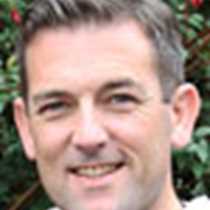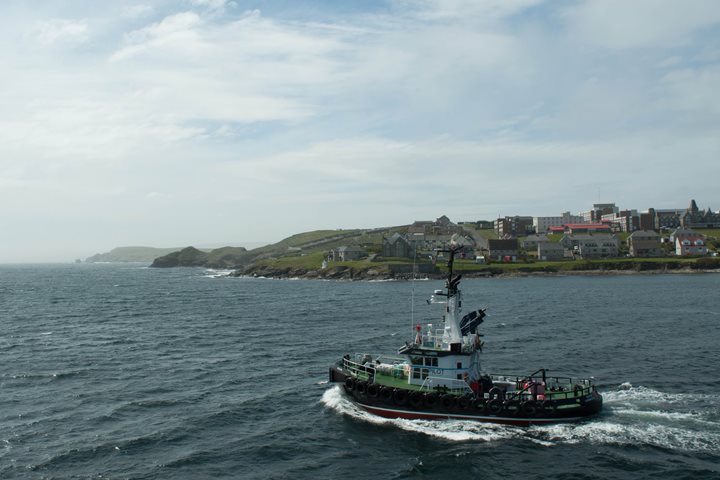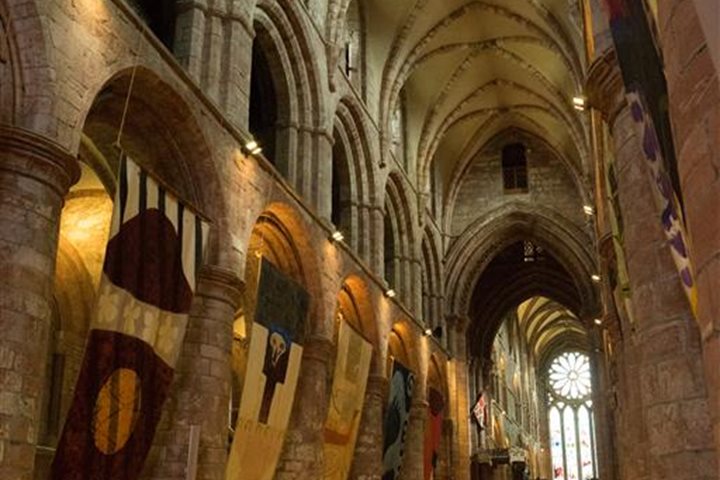National Geographic Explorer approached the St. Kilda archipelago from the southeast on a grey and murky morning. The squally conditions prevented any Zodiac cruises or landings on the island, so we slowly sailed around the islands instead, allowing some spectacular vistas of the archipelago. In doing so, we were treated to a blizzard of northern gannets and fulmars as we approached Boreray Island, which lies northwest of St. Kilda. Boreray is home to the largest colony of northern gannets in the world and the largest colony of northern fulmar in the UK. The sight of thousands of gannets soaring overhead in the strong North Atlantic headwinds was a sight to behold. The white-capped cliffs adorned with years of guano deposits added a spicy scent to the air as the wind was squeezed between Boreray, Stac an Armin, and Stac Lee, which resulted in one or two hats being blown from their owner’s heads! An interesting footnote is that the last known sighting of the great auk in the British and Irish Isles was at Stac an Armin in 1840.
After lunch, a scout boat ventured out into Village Bay to ascertain whether it would be safe to load passengers onto a Zodiac and bring them from ship to shore. Unfortunately, it was considered unsafe to attempt any landing on St. Kilda, or to even go on a Zodiac cruise for that matter. Instead, the head warden of St. Kilda, Paul Sharman, gallantly braved the heavy seas and came aboard the Explorer to enthral us all with a talk on the archipelago. Although we did not get the opportunity to land on the island, it was a wonderful spectacle nonetheless, and something I will never forget.
Many have tried to describe the wonders of St. Kilda, including myself here, but few have done so to convey the beauty of the place. So with that, I will leave the final word to someone who has, James Fisher, who in 1947 wrote: “Whatever he studies, the future observer of St Kilda will be haunted the rest of his life by the place, and tantalised by the impossibility of describing it, to those who have not seen it.”







